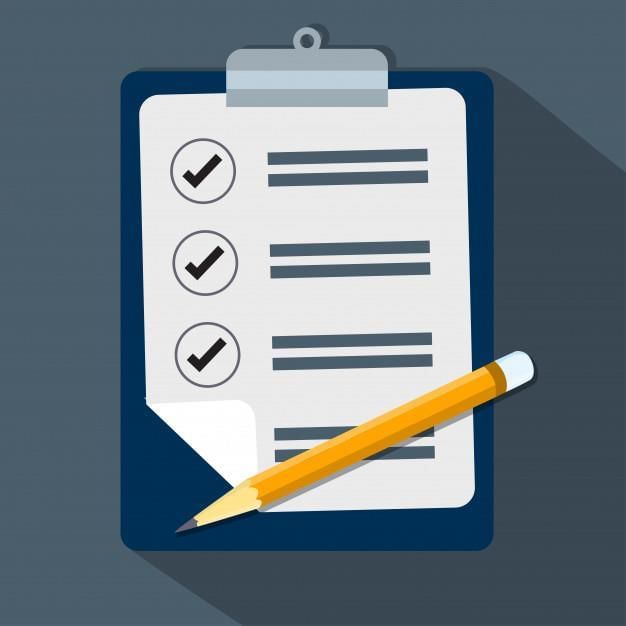Best Study Material for Class 6 Exam
Class 6 Exam > Class 6 Notes > Footprints Class 6: Book Solutions, Notes & Worksheets > Textbook Solutions: Political Developments
Textbook Solutions: Political Developments | Footprints Class 6: Book Solutions, Notes & Worksheets PDF Download
I. Tick (✔) the correct option.
1.
Ans: (b)
Books written by court poets on the exploits of their kings are known as charita kavyas.
2.
Ans: (c)
The rule of the Gupta Dynasty is often known as the Golden Age of Indian History.
3.
Ans: (c)
Chandragupta I, a ruler of the Gupta dynasty, first adopted the title of Maharajadhiraja.
4.
Ans: (c)
Samudragupta is referred to as the Indian Napoleon by the British historian Vincent Smith due to his military exploits and expansionist policies.
5.
Ans: (a)
The Allahabad Pillar inscription composed by Harisena provides information about the exploits of Samudragupta.
6.
Ans: (a)
The Harshacharita, a biography of Harsha, was written by his court poet Banabhatta.
7.
Ans: (b)
"We know about Pulakesin II from a prashasti composed by his court poet Ruvikirti. The Aihole inscription is written in Sanskrit."
8.
Ans: (a)
"Among the Pallava rulers, Mahendravarman and his son, Narasimhavarman I were the most famous. The latter defeated Pulakesin II."
9.
Ans: (b)
Nagara shresthi refers to the chief merchant or the chief banker or the leader of the most powerful guild in a city, making it related to urban governance.
10.
Ans: (b)
"Ur in ancient South India was an assembly of non-brahmana landowners."
II. State whether the following statements are true or false. Rewrite the statements to correct them.
1.
Ans: False
Kalidasa is mentioned as one of the nine jewels or navratnas in the court of Chandragupta II.
2.
Ans: False
The rule of the Guptas is indeed known as the Golden Age of Indian history.
3.
Ans: False
Chinese pilgrim Faxian visited India during the reign of Chandragupta II.
4.
Ans: False
Kumaramatyas, important officials appointed by the king in provinces, were usually paid in cash during the Gupta period.
5.
Ans: False
Harshavardhana shifted his capital from Thanesar to Kannauj.
III. Answer the following questions in brief.
1.
Ans: Chandragupta I ascended the throne in 320 CE as the first important ruler of the Gupta dynasty. He received Magadha as part of his dowry when he married Kumaradevi, a Lichchhavi princess. His empire extended from Magadha to Prayaga.
2.
Ans: Important sources of information about Samudragupta's reign include the Allahabad Pillar inscription (Prayaga prashasti), composed by his court poet Harisena. The inscription mentions Samudragupta's military conquests and the kings he defeated in the north and south of India.
3.
Ans: A bhukti, or province, was managed with the help of administrative officials. Each bhukti was divided into districts called vishayas, and each bhukti was placed under the charge of an uparika. Kumaramatyas, appointed by the king in provinces, played a significant role in administration.
4.
Ans: Harsha ruled for more than 40 years. Although he couldn't extend his power to the east and Deccan, he brought parts of Punjab, Kashmir, Nepal, and Gujarat under his control. Harsha shifted his capital from Thanesar to Kannauj.
5.
Ans: Pulakesin II was a renowned ruler of the Chalukyas. He defeated Harshavardhana on the banks of the river Narmada in 620 CE. After Pulakesin II's death, Chalukyan power declined.
 |
Download the notes
Textbook Solutions: Political Developments
|
Download as PDF |
Download as PDF
IV. Answer the following questions in detail.
1.
Ans: Samudragupta was a great conqueror and the son of Chandragupta I. He ascended the throne in 335 CE. Known as the Indian Napoleon, he expanded his empire through military conquests. The Allahabad Pillar inscription composed by Harisena provides detailed information about Samudragupta's conquests, including the defeated kings and territories.
2.
Ans: The Gupta administration was theoretically centered around the king, assisted by a council of ministers or mantri parishad. Provinces (bhuktis) were divided into districts (vishayas), each under an uparika. Kumaramatyas, appointed officials, played a key role, and some posts were hereditary. The decentralization of administration allowed local elites to become powerful, especially with the grant of land instead of cash salaries.
3.
Ans: Historical information about this period is derived from various sources. Prashastis and charita kavyas, like the Allahabad Pillar inscription and Harshacharita, provide insights into the achievements and reigns of kings like Samudragupta and Harsha. Inscriptions, such as the Aihole inscription, offer information about rulers like Pulakesin II. Chinese pilgrim Faxian's accounts contribute to understanding the socio-political scenario during his visit to India.
4.
Ans: The Pallavas and Chalukyas were powerful kingdoms in South India. The Pallava kingdom, located in the Kaveri Delta with its capital at Kanchipuram, had rulers like Mahendravarman and Narasimhavarman I. Pulakesin II of the Chalukyas defeated Harshavardhana. The Chalukyan capital was Aihole, later Badami. The Aihole inscription by Ruvikirti provides information about Pulakesin II.
5.
Ans: Local assemblies in South India played a major role in governance. Nagarams, assemblies of different kinds, were influential. The flowchart in the chapter provides details about the composition of these assemblies, involving brahmana and non-brahmana landowners, local chiefs, and other influential figures. These assemblies continued to be crucial in administration for centuries.
The document Textbook Solutions: Political Developments | Footprints Class 6: Book Solutions, Notes & Worksheets is a part of the Class 6 Course Footprints Class 6: Book Solutions, Notes & Worksheets.
All you need of Class 6 at this link: Class 6
|
65 videos|125 docs|25 tests
|
FAQs on Textbook Solutions: Political Developments - Footprints Class 6: Book Solutions, Notes & Worksheets
| 1. How did political developments shape the society in Class 6? |  |
| 2. What are some key political figures studied in Class 6 political developments? |  |
Ans. Some key political figures studied in Class 6 political developments include leaders such as kings, emperors, presidents, prime ministers, and other influential individuals who have impacted the course of history.
| 3. How did political developments impact economic systems in Class 6? |  |
Ans. Political developments in Class 6 had a significant impact on economic systems by influencing policies related to trade, taxation, resource allocation, and overall economic stability within societies.
| 4. What role did political ideologies play in shaping political developments in Class 6? |  |
Ans. Political ideologies such as democracy, monarchy, socialism, and communism played a crucial role in shaping political developments in Class 6 by guiding the beliefs, values, and principles that governed decision-making processes and governance structures.
| 5. How did political developments influence cultural practices and traditions in Class 6? |  |
Ans. Political developments in Class 6 influenced cultural practices and traditions by promoting certain beliefs, values, and behaviors that aligned with the prevailing political ideologies and governance systems of the time.
Related Searches


























